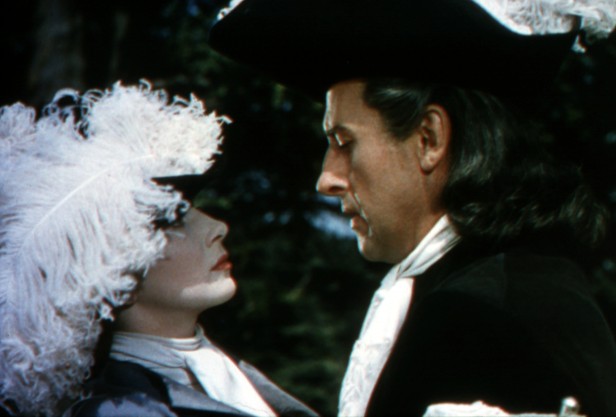




UK 1948. Dir Basil Dearden. With Joan Greenwood, Stewart Granger, Peter Bull,Flora Robson. 96min. U
The attention paid to Ealing’s comedies has long been at the expense of their dramas, an oversight that has perennially overshadowed the work of Basil Dearden; although his importance to the studio was amply attested to when entrusted by Michael Balcon with the responsibility of making Ealing’s first production in Technicolor.
In this rare excursion for Ealing into historical drama, Bull and Greenwood are perfectly cast as the dissolute Prince George-Louis and his reluctant bride Sophie-Dorothea. Shooting in colour for the first time allowed the studio to give full rein to the period costumes and sets (the latter were nominated for an Oscar). The design provides an evocative backdrop to the princess’s tragic story. As her lover, Granger shows why he was soon poached by Hollywood, his stature and looks making him the perfect screen hero.
Although Ealing’s comedies seemed contemporary at the time, they are now as much period pieces as Saraband (for Dead Lovers), set in the early eighteenth century. Conceived as a Gainsborough romance for grown-ups – for which Ealing enlisted Gainsborough leading man Stewart Granger (who recalled it fondly in his memoirs) – it was a pet project of Balcon’s, but proved something of a poisoned chalice to Dearden, being the second of two ambitious box office failures based on novels by Helen Simpson (the second being Hitchcock’s Under Capricorn).
Nevertheless with production design by Dearden’s regular collaborator Michael Relph and photography by Douglas Slocombe it’s ravishing to look at, with a haunting score by Alan Rawsthorne. Among the supporting cast Peter Bull makes the future George I a memorable ogre, Flora Robson and Françoise Rosay a formidable pair of grande dames; while if it it only had a young Joan Greenwood in Technicolor playing the waif-like Sophie Dorothea that alone would make it well worth viewing. @RichardChatten